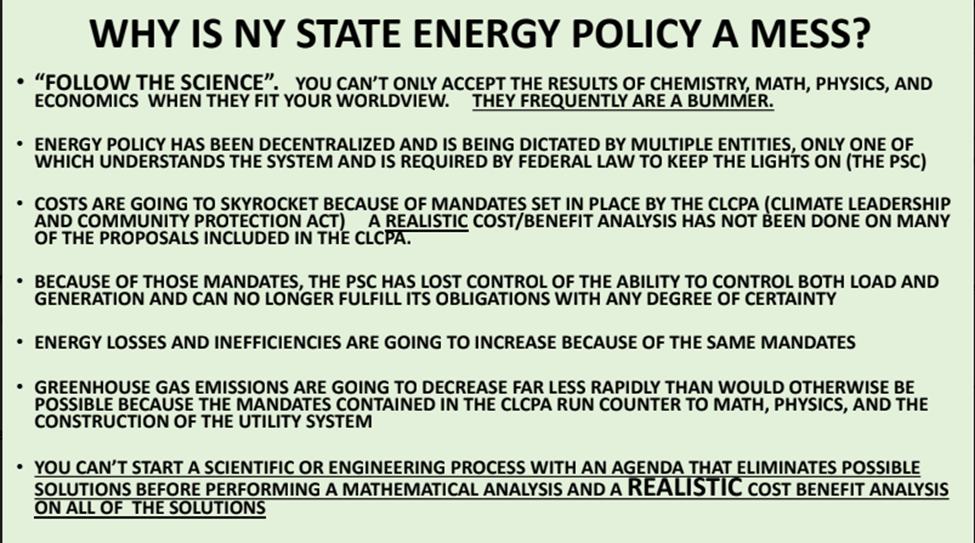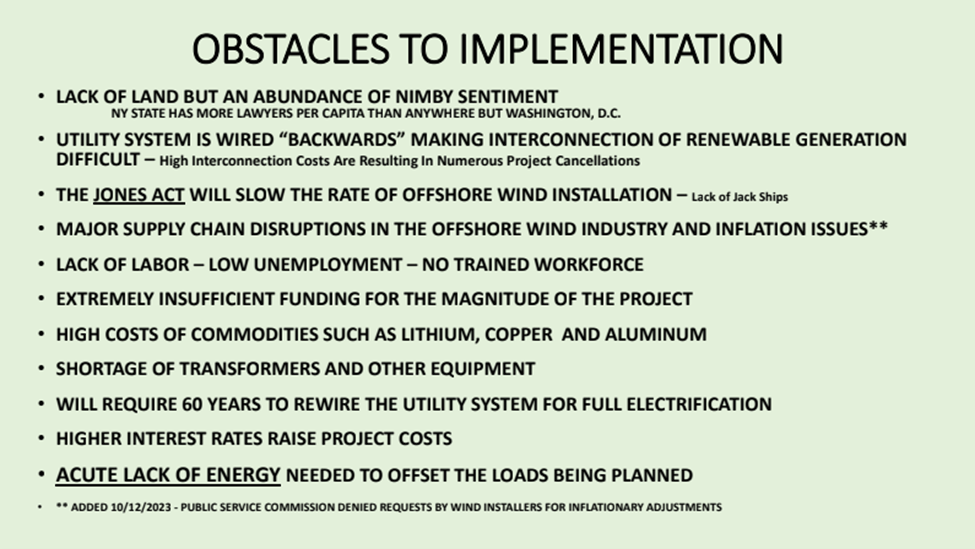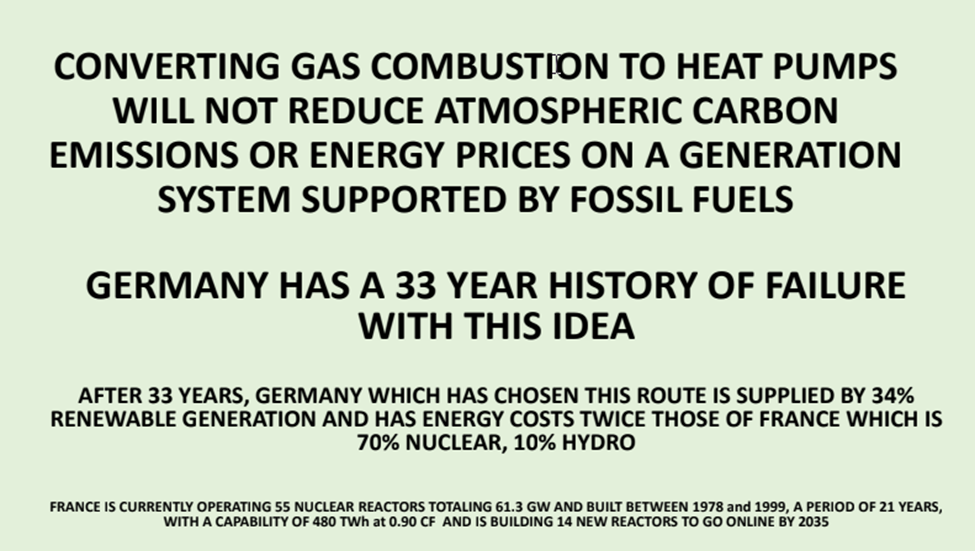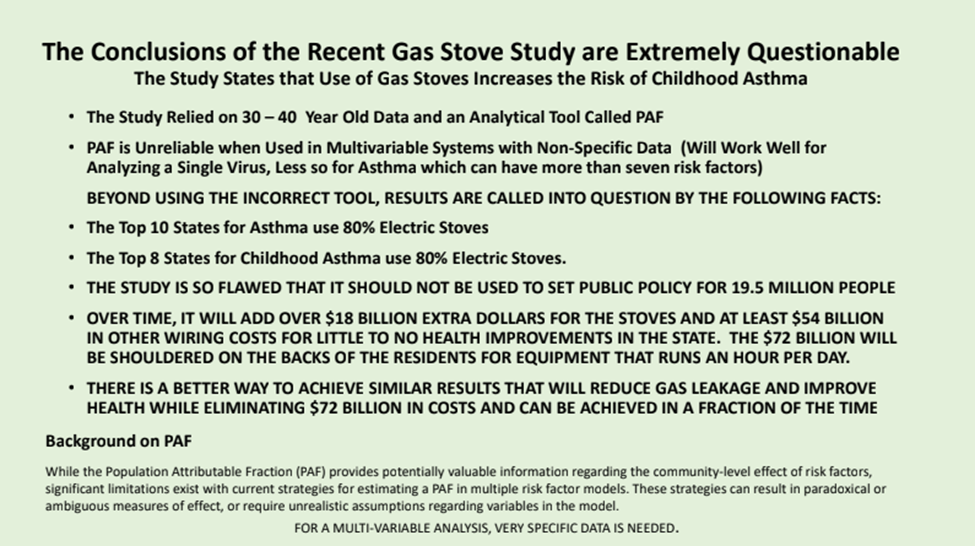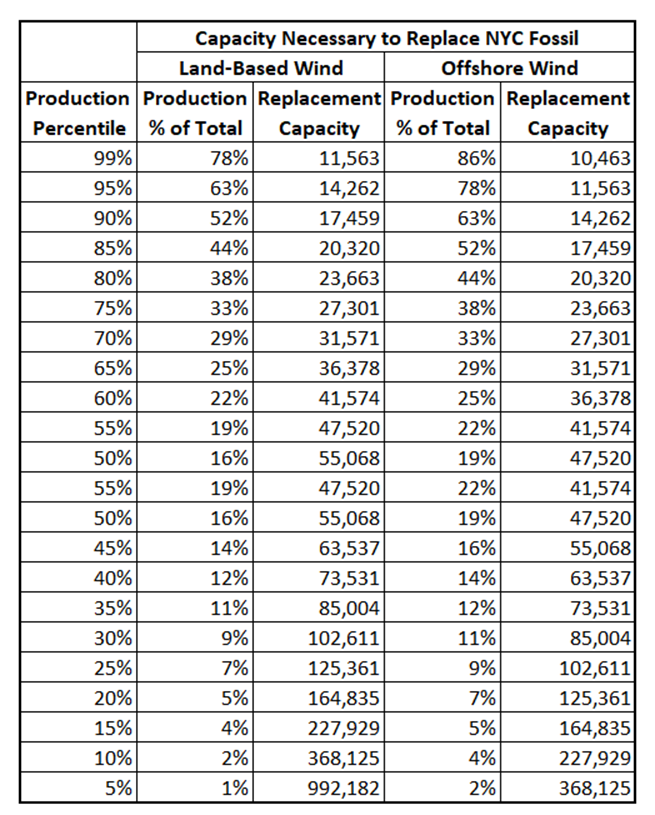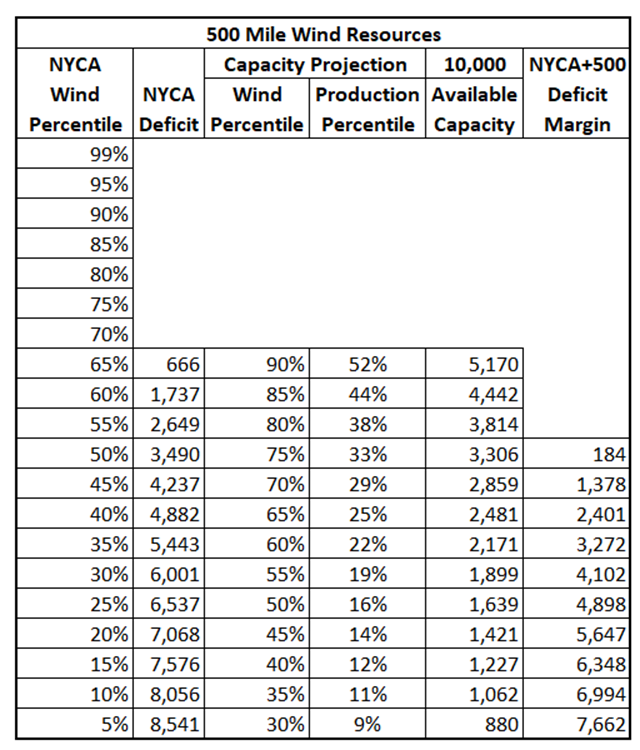A different version of this article was published at Watts Up With That.
As part of the Department of Public Service Proceeding 15-E-0302 a technical conference was held on December 11 and 12, 2023 entitled Zero Emissions by 2040. A zero-emissions electric system is a key part of New York’s Climate Leadership & Community Protection Act (Climate Act) and all credible projections for the generating resources needed for the zero emissions Climate Act target have noted that a new category of generating resources called Dispatchable Emissions-Free Resources (DEFR) is necessary to keep the lights on during periods of extended low wind and solar resource availability. Previously I published an article describing the slide presentation by Zachary Smith from the New York Independent System Operator (NYISO) describing DEFR. The video of the meeting is available now and this article describes the first session of the meeting – Gap Characterization.
I have followed the Climate Act since it was first proposed, submitted comments on the Climate Act implementation plan, and have written over 400 articles about New York’s net-zero transition. The opinions expressed in this post do not reflect the position of any of my previous employers or any other organization I have been associated with, these comments are mine alone.
Overview
The Climate Act established a New York “Net Zero” target (85% reduction in GHG emissions and 15% offset of emissions) by 2050. It includes an interim 2030 reduction target of a 40% reduction by 2030 and a requirement that all electricity generated be “zero-emissions” by 2040. The Climate Action Council (CAC) was responsible for preparing the Scoping Plan that outlines how to “achieve the State’s bold clean energy and climate agenda.” In brief, that plan is to electrify everything possible using zero-emissions electricity. The Integration Analysis prepared by the New York State Energy Research and Development Authority (NYSERDA) and its consultants quantifies the impact of the electrification strategies. That material was used to develop the Draft Scoping Plan outline of strategies. After a year-long review, the Scoping Plan was finalized at the end of 2022. In 2023 the Scoping Plan recommendations were supposed to be implemented through regulation, PSC orders, and legislation. Not surprisingly, the aspirational schedule of the Climate Act has proven to be more difficult to implement than planned and many aspects of the transition are falling behind. DEFR is a particularly challenging problem. When political fantasies meet reality, reality always wins.
Gap Characterization
The Department of Public Service (DPS) convened a two-day technical conference on December 11, 2023. The conference focused on characterization of the potential “gap” discussed in the May 14, 2023 Proceeding 15-E-0302 Order and technologies that could shrink or fill that gap.
The first session (video) of the conference was titled Characterizing the potential “gap”. It addressed resource adequacy, transmission security, and grid stability arising from shuttering fossil fuel-fired resources and increased loads due to the Climate Act electrification strategies. It was moderated by Schuyler Matteson from DPS. There were four panelists and I have included links to the location in the video with their introductions:
- Deidre Altobell, Chief Transmission Planning Engineer Consolidated Edison. She represented the concerns of the New York City electric system provider. New York City has unique issues within the New York State electric power market that are a particular challenge for a transition to a system dependent upon renewables.
- Prof. C. Lindsay Anderson, Chair of Department of Biological and Environmental Engineering Cornell. Professor Anderson provided an independent check on the work of other electric system planning analysts because her group has modeled resources necessary for the New York electric system transition.
- Zach Smith, VP System Resource Planning, New York Independent System Operator (NYISO). NYISO is “responsible for operating wholesale power markets that trade electricity, capacity, transmission congestion contracts, and related products, in addition to administering auctions for the sale of capacity.” As part of those responsibilities NYISO has done extensive modeling resource projections of the net-zero transition.
- Kevin Steinberger, Director, Energy and Environmental Economics (E3). As part of the New York Climate Act transition plan an Integration Analysis was performed that included an assessment of the electric system net-zero transition resources. E3 provided the quantitative analysis for that effort.
The description for the meeting described the items for discussion:
- Existence of a “gap,” based on physical and planning requirements of the grid.
- Resource adequacy, transmission security, and grid stability components of the potential resource-reliability gap that is expected to emerge in New York as fossil-fired generation resources are shut down pursuant to CLCPA requirements.
- How models used by NYISO, the Climate Action Council, and others identify this “gap” and estimate its size and timing.
- Information to seek/develop through additional studies conducted as part of the Coordinated Grid Planning Process and/or ongoing NYISO Reliability Needs Assessment.
This article only discusses one of the sessions in the Technical Conference. The DPS website provides information on the other sessions and links to the videos of the discussions. There is plenty of fodder for additional posts, but I also have a long list of obligations and other topics to cover so I am not going to address anything else here.
Gap Characterization Session
After the introductions the moderator asked a series of questions. This section lists the questions with a link to that location in the video. I highlight some of my concerns and points made by the panelists
The first questions was: “How do we know if there is a gap?” Professor Anderson described an analysis her group did. They made projections for expected loads and potential resources then used 22 years of hourly historical data to model the system. Without considering cost constraints they assessed system vulnerabilities to evaluate periods where there was insufficient generation to meet projected loads. Even with optimistic projections they found there will be periods during the coldest and hottest periods where there will be insufficient generation from wind, solar, and energy storage resources. Steinberger also responded that their modeling consistently showed the need for a new resource that is firm, dispatchable, and has no emissions that can power the system for days without significant recharge from wind and solar resources. He stressed the importance of considering actual historical meteorological conditions because renewable energy production is dependent on weather conditions.
Zachary Smith gave an overview summary presentation of the DEFR issue that was the focus of an earlier post of mine. In his first slide (shown below) he gave an overview of the generating resource outlook to make the point that a large amount of new generating resources needs to be developed. The estimates shown are from the 2021-2040 System & Resource Outlook and represent two plausible load projections. He noted that there are “a lot of attributes that fossil fuel resources provide today that wind, solar, and energy storage simply cannot provide”. He also made the point that the DEFR replacements do not have to be a single technology but could be several technologies that in aggregate can replace the fossil generation.
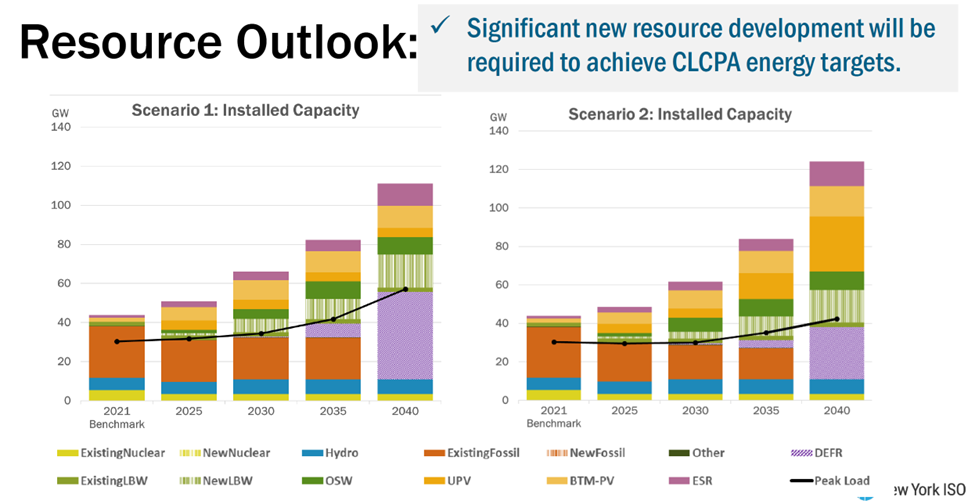
The ultimate problem for reliability in an electric system that depends on wind and solar is illustrated in the following slide from Smith’s presentation. It highlights a 7-day wind lull when the wind, solar, and energy storage are insufficient to meet demand. The replacement resources must be able to ramp up quickly, stay online for a long period, and provide ancillary services to support the transmission system. The sum of the grey area under the curve during that period is the amount of energy (MWh) that must be provided by DEFR sources based on an analysis of historical weather data. If there are insufficient resources during a wind lull, then the load cannot be met. The consequences of that situation would be catastrophic.

To meet this need for dispatchable resources Smith explained that dispatchable emission-free resources (DEFRs) must be developed and deployed throughout New York:
- As resources shift from fossil generators to zero emission resources, essential grid services, such as operating reserves, ramping, regulation, voltage support, and black start, must be available to provide New Yorkers with a reliable and predictable electric system that consumers require.
- DEFRs will be required to provide both energy and capacity over long durations, as well as the reliability attributes of retiring synchronous generation. The attributes do not need to be encapsulated in a singular technology, but in aggregate the system needs a sufficient collection of these services to be reliable.
The NYISO must toe the political correctness line, so Smith downplays the enormity of the challenge to bring DEFR online in the timeframe necessary to meet the arbitrary Climate Act schedule. I have no such restrictions so I will note that I think that anyone who thinks that this can be done is crazy. Smith lists the attributes needed by DEFR in his presentation. In the following I offer my comments on his list of attributes.

Smith’s first attribute for DEFR is that it must have “dependable fuel sources that are carbon free and allow these resources to be brought online when required”. Clearly intermittent wind and solar do not meet this fundamental requirement.
The second DEFR attribute is that it must be “non-energy limited and capable of providing energy for multiple hours and days regardless of weather, storage, or fuel constraints”. This is a particular concern of mine. Wind and solar resources correlate in time and space. In other words, when the wind is light at one wind farm in New York it is very likely that all the wind farms in the state are experiencing light winds. The seven-day wind lull example in the dispatchable resources needed figure illustrates the problem. If there are insufficient resources during that wind lull, then the load cannot be met. My concern is that I think we do not know what the worst case low renewable resource availability period is. Until there has been more analysis done then I believe that planning to prevent reliability issues is inadequate.
The NYISO operators balance generation with load constantly. Smith describes several attributes necessary for this requirement. DEFR must be able to “to follow instructions to increase or decrease output on a minute-to-minute basis”. There must be “flexibility to be dispatched through a wide operating range with a low minimum output”. Finally, DEFR must be “fast ramping to inject or reduce the energy based on changes to net load which may be driven by changes to load or intermittent generation output”.
In addition to the attributes needed when units are operating, there are startup attributes. DEFR must be “quick start to come online within 15 minutes” and capable of “multiple starts so resources can be brought online or switched off multiple times through the day as required based on changes to the generation profile and load”. Smith explains that a range or DEFR generation will likely be required. Not every DEFR must be capable of every attribute for matching load but sufficient amounts each attribute for the system requirement will be required.
In addition to the generating requirements that cannot be supplied by wind and solar, there are ancillary support services for the transmission system. Smith describes three transmission support DEFR attributes:
- Inertial Response and frequency control to maintain power system stability and arrest frequency decline post-fault;
- Dynamic Reactive Control to support grid voltage; and
- High Short Circuit Current contribution to ensure appropriate fault detection and clearance.
Smith’s presentation lists the attributes of twelve sample technologies in the following slide. This represents the NYISO opinion of the capability of different technologies to meet the attributes necessary to maintain a reliable system. In the future grid the insistence that all fossil fired units must be shut down means that numerous technologies that meet some of the necessary attributes will be required. The added complexity of these technologies does not increase resiliency because wind, solar, battery and demand response are all energy limited. Ancillary support services will be a major consideration because wind, solar and battery do not provide those services. Just from this overview, it is clear that affordability and reliability will be challenges.
Attributes of Sample DEFR Technologies
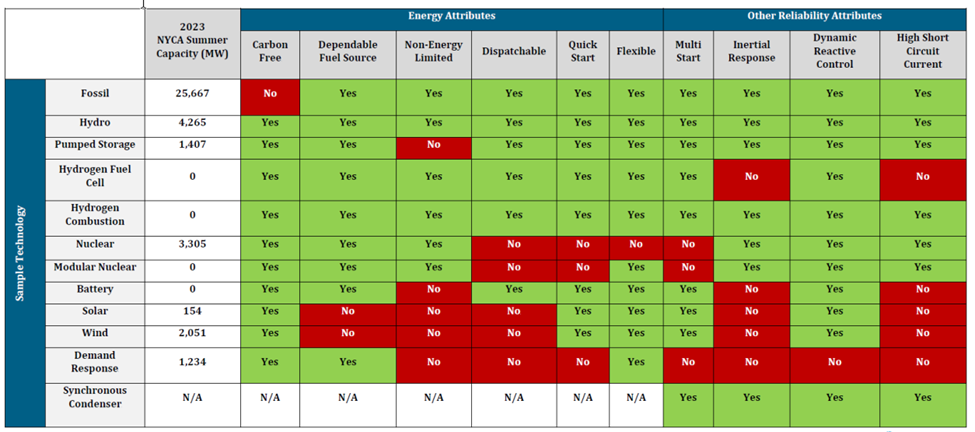
The moderator asked for Altobell’s reaction relative to the situation in New York City. She noted that Con Ed agrees with NYISO analyses and that their work has shown similar results. She made the point that there is a minimum amount of generation that must be on-line in New York City to provide reactive support. She explained that the location of that generation is important. Importantly, she noted that we cannot let any more fossil retire until replacement services are provided.
Altobell also described some of the reliability standards that they are required to address. For example, the reliability standard N-1-1 addresses the loss of the two largest components on the system and the ability to recover from the loss of those two components. This criterion is considered on a daily and on a long-term basis. Currently the system relies on quick start units to get the system back to normal after the loss of large components but the peaking turbines that have historically been used for this are being retired which complicates compliance with the requirement.
In another example of a hidden cost of the net-zero transition Altobell explained that the New York City transmission system needs to be modified to eliminate load pockets. Historically Con Ed has relied on generating resources that were located to serve those load pockets. To replace those resources, the load pockets have to be eliminated to open up the system. This is complicated by the fact that there isn’t much room available for infrastructure like substations.
I was interested in her comments on inverter-based resources relative to a dispatchable resources. She noted that 1,000 MW of offshore wind is equivalent to 100 MW of dispatchable resources in transmission security analyses. That means to replace the 2,000 MW of dispatchable Indian Point power that the State shut down, 20,000 MW of offshore wind must be deployed. Note that the Climate Act mandates 9,000 MW of offshore wind which is far less than what is needed to simply replace Indian Point.
The next question from the moderator addressed the quantity of resources necessary to address the gap. Specifically, he asked can wind, solar, short-duration solar, and improvements to the transmission system eliminate the gap. Professor Anderson explained that her team’s work found that adding more of each technology is not going to solve the gap problem. It is not just that we need more, we need it in the right places.
The moderator reflected the consensus of the panelists when he noted the New York gaps cannot be solved using existing technology because of the physical characteristics of the grid and the location of load in the state. He followed up by asking Steinburg when the gap will show up, how quickly do we need to react, and what is the magnitude of the resources necessary to respond. Steinburg said the work his group did for the Integration Analysis showed that the timing of the gap problem depends on the rate of electrification and retirements of existing fossil resources. The problem will be worse in the winter once the load peak shifts to account for electric heating and electric vehicles. Smith noted that the NYISO expects that New York will be a winter peaking system in the ”early to mid- 2030’s”.
Schyler Matteson, the moderator, pointed out that before the DEFR resources can be deployed a long period of planning, permitting, construction, and inter-connection is required. He stated that this could be on the order of seven years. He followed up with a question to Smith about how planning for the system reserve margins and the local transmission security issues most prevalent in New York City will affect the process to develop DEFR to replace existing fossil. Smith emphasized the point that this is a challenge that will require extensive collaboration between agencies. In order to address the retirement issues NYISO has instituted a quarterly “short-term assessment of reliability” process. While this reactively addresses generator deactivation notices, NYISO is also trying to consider longer-term issues. In particular, the Department of Environmental Conservation has a rule promulgated to retire old peaking combustion turbines. In that process, NYISO temporarily extended the retirement dates until reliability solutions could be deployed. Smith emphasized that a similar process needs to be incorporated as part of the Climate Act net-zero transition. Smith went on to point out that some of the DEFR required is not yet commercially available so there is even more lead time than required to simply deploy the resources. Altobell explained that there is another consideration – outage scheduling. The existing system still has to operate and the outages when changes can be made without threatening reliability are getting smaller and smaller.
The moderator gave his summary of the panel discussion and asked for comments. He said a gap “definitely exists”, that gap is flexible based on the future load characteristics, the generation mix, load profiles, and transmission constraints. The gap is starting to show up around 2035 and is definitely an issue by 2040. DEFR needs to be commercially available during the deployment planning period. Three different analyses showed that on the order of 20 to 30 GW of capacity is needed. Gaps of four maybe five days occur as much as every few years. Smith pointed out that future planning also has to address extreme events and the need for resilience.
The session ended by discussing a question raised in the chat. The question raised was how do we characterize what the maximum DEFR need is? Smith replied that more analysis is needed. He mentioned that the New York State Reliability Council is charged with addressing this issue. It is necessary to define the worst-case conditions and then decide how to design the system to deal with it. Altobell supported his comments and pointed out that the Reliability Council has an Extreme Weather Working Group that is looking at gap characteristics. They are also addressing the reliability rules that will be needed when the projected amounts of inverter-based resources (wind, solar, and energy storage) are deployed.
Discussion
At the Climate Action Council meeting to vote on the approval of the Scoping Plan Dr. Robert Howarth summarized his statement supporting his vote to approve the Scoping Plan. His statement notes that:
I further wish to acknowledge the incredible role that Prof. Mark Jacobson of Stanford has played in moving the entire world towards a carbon-free future, including New York State. A decade ago, Jacobson, I and others laid out a specific plan for New York (Jacobson et al. 2013). In that peer-reviewed analysis, we demonstrated that our State could rapidly move away from fossil fuels and instead be fueled completely by the power of the wind, the sun, and hydro. We further demonstrated that it could be done completely with technologies available at that time (a decade ago), that it could be cost effective, that it would be hugely beneficial for public health and energy security, and that it would stimulate a large increase in well-paying jobs. I have seen nothing in the past decade that would dissuade me from pushing for the same path forward. The economic arguments have only grown stronger, the climate crisis more severe. The fundamental arguments remain the same.
The position that “it could be done completely with technologies available at that time” had an out-sized influence on the Climate Action Council decision to approve the Scoping Plan. After all, if there are no technological barriers then it is simply a matter of political will.
This session is proof that this belief is wrong. The work of Prof. C. Lindsay Anderson, Chair of Department of Biological and Environmental Engineering Cornell; Zach Smith, VP System Resource Planning, New York Independent System Operator; and Kevin Steinberger, Director, Energy and Environmental Economics all found that a new resource that has all the attributes of fossil-fired peaking units but without any emissions is needed. Ultimately, the failure of the Hochul Administration to step and point out that the Integration Analysis that formed the basis of the Scoping Plan pointed out the need for this resource will have serious implications.
I have two worries. The first concern is that there are resource candidate technologies that are not commercially available. There is a long road between theory and lab prototype tests and having a technology available that can be deployed to maintain reliability. It is likely that many of the candidate technologies will fail this test. Secondly, even if the technologies are viable there are issues related to deployment time and costs. The Climate Act net-zero transition includes an ambitious schedule and there are affordability concerns. Neither issue can be addressed at this time.
A more immediate concern is the push to retire existing fossil-fired resources as soon as possible. This panel discussion showed that the belief that wind, solar, and energy storage are resources that can just be plugged into the New York City electric system to replace peaking power plants is dangerous. Those existing facilities provide much more than electric energy and wind, solar, and energy storage don’t provide those other necessary services. The session made the point that location matters and that there are spatial limitations in the City that could very well preclude development of alternative technology with different footprint requirements. Eventually, someone is going to have to stand up and tell the vocal environmental justice advocates that their demands to shut down peaking power plants cannot be met.
Conclusion
It is not clear where the Department of Public Service is going to go with issues raised at this technical conference. So far, the transition plan narrative has been based on the misplaced belief that no new technologies are needed. This gave the crony capitalists selling the wind, solar, and energy storage resources the opportunity to make the plan all about building as much as possible as fast as possible. Is there any chance that these technical issues will cause a change in direction?











